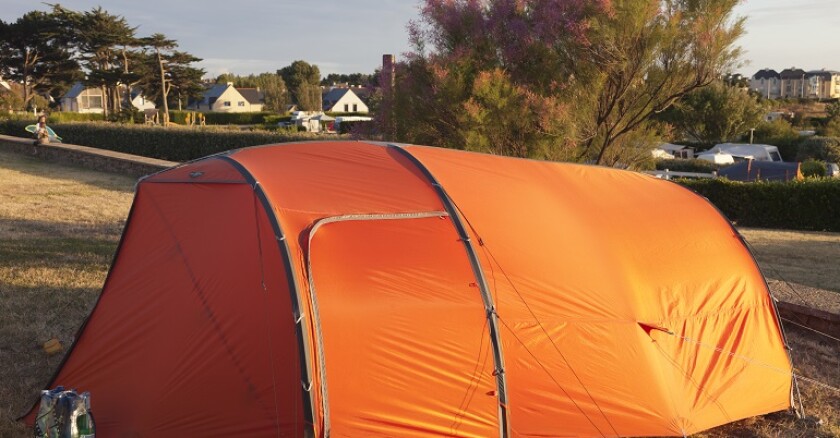At L-Breath, an outdoor equipment chain store in Tokyo, the number of people buying tents for emergency use has increased since the Kumamoto Earthquake. “There’s a lot of interest from middle-aged and elderly customers who have no outdoor recreation experience,” says Hiroaki Oka from the store in Tokyo’s Ochanomizu area.
With many in Kumamoto having developed so-called “economy class syndrome” after spending too many nights in their vehicles, customers are starting to “want to secure a place to sleep where it is possible to stretch out,” Oka said.
Although there are large family-sized tents, the ones recommended for emergencies are typically used for mountaineering. A standard one-person tent is about 1 metre wide by 2 metres long, and about 1 metre high.
In recent years, these tents have been getting smaller and lighter. Most are made of nylon or polyester, with an aluminum alloy frame, and can be as light as 1.5 kilogrammes. When folded, they are roughly the size of a pillow and can quite easily be carried using one hand. Prices start from around 20,000 yen ($191).
Tents are pitched by passing aluminum rods through corresponding areas of fabric and then pegging them into the ground. Spreading an insulating sheet, air mattress or blanket on the tent floor makes it more comfortable to sleep in and will reduce physical stress. “These tents can even be set up by someone with no knowledge of camping, and can even be used as a place to change clothes or breastfeed,” Oka says.
Mont-bell Co., an outdoor goods manufacturer headquartered in Osaka, started a volunteer organisation named Outdoor Gientai (Outdoor relief squad) after the 1995 Great Hanshin Earthquake. Using their know-how of outdoor activities and tools for emergency situations, they disseminate knowledge and provide support activities.
During the Kumamoto Earthquake, the firm provided tents and sleeping bags for free in disaster-hit areas. In Minami-Aso, where the company has a store, many tents were set up and used by a large number of people.
According to Takamasa Wada, a disaster and crisis management adviser, “tents are useful as temporary shelters in the event of a disaster. They can also be used by pet owners if their pets are not allowed into evacuation centers.”
During the Kumamoto Earthquake, many people set up tents in their gardens or garages. You should be careful when choosing a location, as there is the risk of getting injured by buildings that collapse due to aftershocks.
“It is also important to choose a location where rain will not seep in, while remembering to find a cool area so you won’t suffer from heatstroke inside the tent. As there’s the danger of lightning striking the tent during stormy weather, it is best to locate a building in the vicinity beforehand that you could safely evacuate to,” advises Wada.
Convenience for festival-goers
Tents can also be used when enjoying outdoor music events in the summer, whether it be for short breaks or overnight stays. Although tents are effective when trying to avoid strong sunlight or rain, you should follow the organisers’ instructions and mind your manners.
At events such as Fuji Rock Festival, to be held in July in Yuzawa, Niigata Prefecture, and the Rock in Japan Festival, to be held in August in Hitachinaka, Ibaraki Prefecture, overnight camping spaces are provided near the venues. However, tents may not be set up in areas not specified by the organisers. In the case of Fuji Rock, bringing tents into the venue is prohibited. This rule was put in place after a significant number of tents were set up and left empty to secure good viewing spots.
———
©2016 the Asia News Network (Hamburg, Germany)
Visit the Asia News Network (Hamburg, Germany) at www.asianewsnet.net/home/
Distributed by Tribune Content Agency, LLC.








